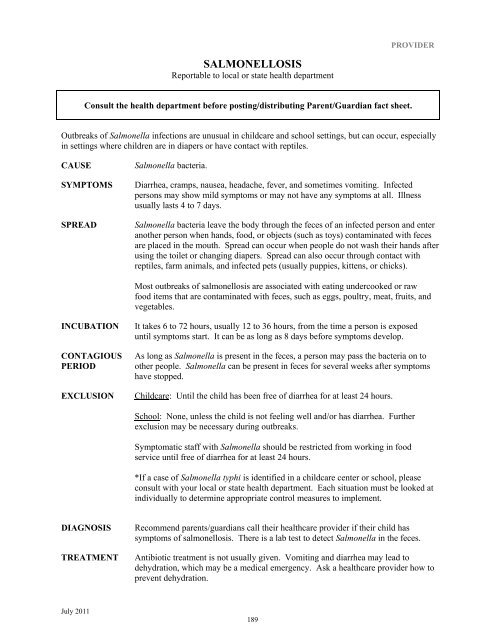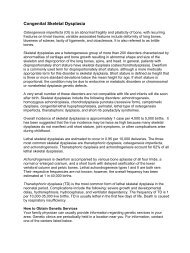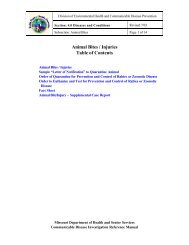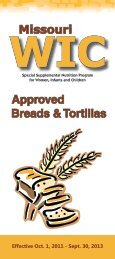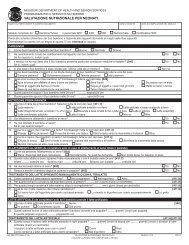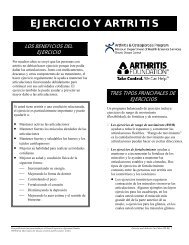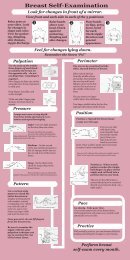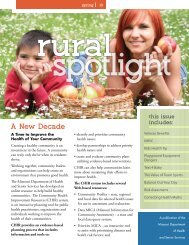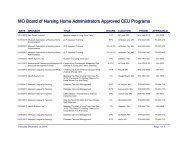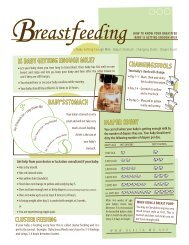Prevention and Control of Communicable Diseases - Missouri ...
Prevention and Control of Communicable Diseases - Missouri ...
Prevention and Control of Communicable Diseases - Missouri ...
You also want an ePaper? Increase the reach of your titles
YUMPU automatically turns print PDFs into web optimized ePapers that Google loves.
July 2011<br />
SALMONELLOSIS<br />
Reportable to local or state health department<br />
Consult the health department before posting/distributing Parent/Guardian fact sheet.<br />
189<br />
PROVIDER<br />
Outbreaks <strong>of</strong> Salmonella infections are unusual in childcare <strong>and</strong> school settings, but can occur, especially<br />
in settings where children are in diapers or have contact with reptiles.<br />
CAUSE Salmonella bacteria.<br />
SYMPTOMS Diarrhea, cramps, nausea, headache, fever, <strong>and</strong> sometimes vomiting. Infected<br />
persons may show mild symptoms or may not have any symptoms at all. Illness<br />
usually lasts 4 to 7 days.<br />
SPREAD Salmonella bacteria leave the body through the feces <strong>of</strong> an infected person <strong>and</strong> enter<br />
another person when h<strong>and</strong>s, food, or objects (such as toys) contaminated with feces<br />
are placed in the mouth. Spread can occur when people do not wash their h<strong>and</strong>s after<br />
using the toilet or changing diapers. Spread can also occur through contact with<br />
reptiles, farm animals, <strong>and</strong> infected pets (usually puppies, kittens, or chicks).<br />
Most outbreaks <strong>of</strong> salmonellosis are associated with eating undercooked or raw<br />
food items that are contaminated with feces, such as eggs, poultry, meat, fruits, <strong>and</strong><br />
vegetables.<br />
INCUBATION It takes 6 to 72 hours, usually 12 to 36 hours, from the time a person is exposed<br />
until symptoms start. It can be as long as 8 days before symptoms develop.<br />
CONTAGIOUS<br />
PERIOD<br />
As long as Salmonella is present in the feces, a person may pass the bacteria on to<br />
other people. Salmonella can be present in feces for several weeks after symptoms<br />
have stopped.<br />
EXCLUSION Childcare: Until the child has been free <strong>of</strong> diarrhea for at least 24 hours.<br />
School: None, unless the child is not feeling well <strong>and</strong>/or has diarrhea. Further<br />
exclusion may be necessary during outbreaks.<br />
Symptomatic staff with Salmonella should be restricted from working in food<br />
service until free <strong>of</strong> diarrhea for at least 24 hours.<br />
*If a case <strong>of</strong> Salmonella typhi is identified in a childcare center or school, please<br />
consult with your local or state health department. Each situation must be looked at<br />
individually to determine appropriate control measures to implement.<br />
DIAGNOSIS Recommend parents/guardians call their healthcare provider if their child has<br />
symptoms <strong>of</strong> salmonellosis. There is a lab test to detect Salmonella in the feces.<br />
TREATMENT Antibiotic treatment is not usually given. Vomiting <strong>and</strong> diarrhea may lead to<br />
dehydration, which may be a medical emergency. Ask a healthcare provider how to<br />
prevent dehydration.


